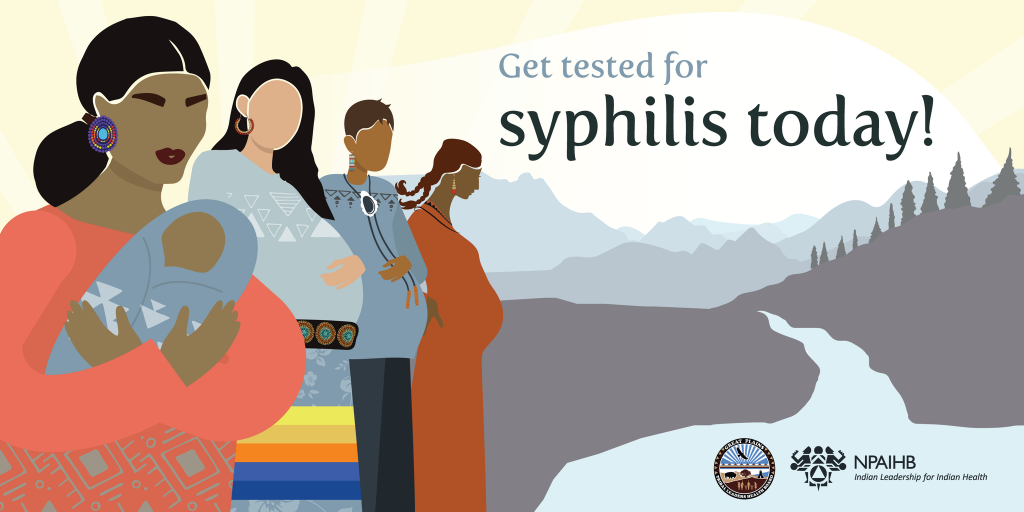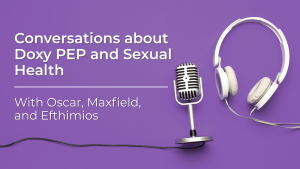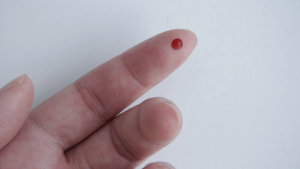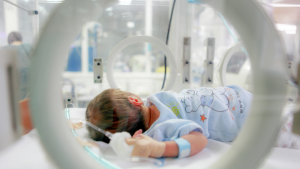
New Report Highlights Missed Opportunities for Congenital Syphilis Prevention
A new report from the Centers for Disease Control (CDC) shows that we’re missing opportunities to prevent congenital syphilis and save lives.

As rates of syphilis have soared in recent years, one group has been particularly hard hit. According to the Great Plains Tribal Epidemiology Center, syphilis rates among Native Americans in Iowa, Nebraska, North Dakota, and South rose 1,865% from 2020 to 2022. This is over 10 times the national increase seen during the same period. The center also found that 1 in 40 Native American and Alaska Native babies born in that region in 2022 had a syphilis infection.
Earlier this year, the National Indian Health Board, a nonprofit that advocates for health care for U.S. tribes, urged the Department of Health and Human Services to declare a public health emergency. This would allow tribal leaders access to additional federal funding and resources such as public health workers, data, and supplies.
Overall, the latest STI data from the Centers for Disease Control and Prevention (CDC) show some glimmers of hope in the fight against syphilis. Cases of primary and secondary syphilis cases are down 10% from 2022, and overall cases of syphilis (including late stage and congenital syphilis) were up just 1% this. There’s even some indication that the congenital syphilis outbreak is slowing down—there was only a 3% increase in cases in 2023 compared to 30% annual increases in recent years.
Still, there are more syphilis cases today than we’ve seen since the 1950s, and last year saw the highest number of congenital syphilis cases since 1992. There were 279 congenital syphilis-related stillbirths and neonatal/infant deaths in 2023. This recent surge in syphilis is hitting the American Indian an Alaska Native populations particularly hard.
Health care providers who serve the American Indian community say they have been working hard to ensure that everyone gets tested during pregnancy, but they need more resources to combat syphilis. One provider told KFF that she gives 1,300 syphilis tests each month. These providers point out that while syphilis rates in their communities are more than 19 times higher than what they were in 2020, there has not been a corresponding increase in staff or funding.
Meghan Curry O’Connell, the chief public health officer for the Great Plains Tribal Leaders’ Health Board and a citizen of the Cherokee Nation, spoke to KFF about how frustrating the rise in syphilis has been: “It’s completely preventable and curable, so something has gone horribly wrong that this has occurred.” She added, “We know how to address this, but we do need extra support and resources in order to do it.”
Syphilis is a bacterial STI that can cause sores to on the penis, scrotum, vulva, vagina, or anus in its early stages. Syphilis is passed when another person comes in contact with these sores during oral, anal, or vaginal sex. It can also be passed from a pregnant person to their baby during pregnancy or childbirth.
Syphilis can be treated with antibiotics, but if left undetected and untreated it can affect multiple organs and systems, including the brain, heart, eyes, and bones. Syphilis during pregnancy can cause miscarriage, stillbirth, and even infant death. Babies born with syphilis can face lifelong health issues including deformed bones, enlarged livers and spleens, or brain and nerve problems such as blindness or deafness.
Pregnant people who are diagnosed with syphilis can be treated to prevent these issues, but too many people are not getting tested during pregnancy. The CDC believes that 9 in 10 cases of congenital syphilis might have been prevented with timely testing and treatment.
A spokesperson for HHS said that the department is “committed to addressing the urgent syphilis crisis in American Indian and Alaska Native communities,” but thus far HHS has not agreed to declare a public health emergency.
It’s important that as we celebrate the good news within the newest STI data, we don’t forget about the communities that are still struggling.

A new report from the Centers for Disease Control (CDC) shows that we’re missing opportunities to prevent congenital syphilis and save lives.

Many people who take doxy PEP say it gives them peace of mind in their relationships and sex life. We sat down with Oscar Alexis, Efthimios, and Maxfield Haynes to talk about doxy PEP and get their perspective.

A new study found that opt-out screenings for all patients in emergency departments caught numerous cases of syphilis and HIV that would have gone undetected under other screening protocols.

Two studies published in this month’s JAMA Internal Medicine offer encouraging findings about the use of Doxy PEP.

The FDA recently approved an at-home test for syphilis that can provide initial results in just 15-minutes. Syphilis has been surging in recent years with the number of cases rising 80% between 2018 and 2022 alone.

Public health experts have said that every case of congenital syphilis is a failure of STI screening and prenatal care. A new study looked more closely at cases to see what factors in a pregnant person’s life were most associated with congenital syphilis.

Doxy PEP involves taking an oral antibiotic after condomless sex to prevent bacterial STIs. Research has shown that this can reduce the possibility of contracting chlamydia by 88%, syphilis by 87%, and gonorrhea by 55%.

The American College of Obstetricians and Gynecologists released new guidelines recommending that all pregnant people be screened for syphilis three times during pregnancy.
ASHA believes that all people have the right to the information and services that will help them to have optimum sexual health. We envision a time when stigma is no longer associated with sexual health and our nation is united in its belief that sexuality is a normal, healthy, and positive aspect of human life.
ABOUT
GET INVOLVED
ASHA WEBSITES
GET HELP
© 2025 American Sexual Health Association